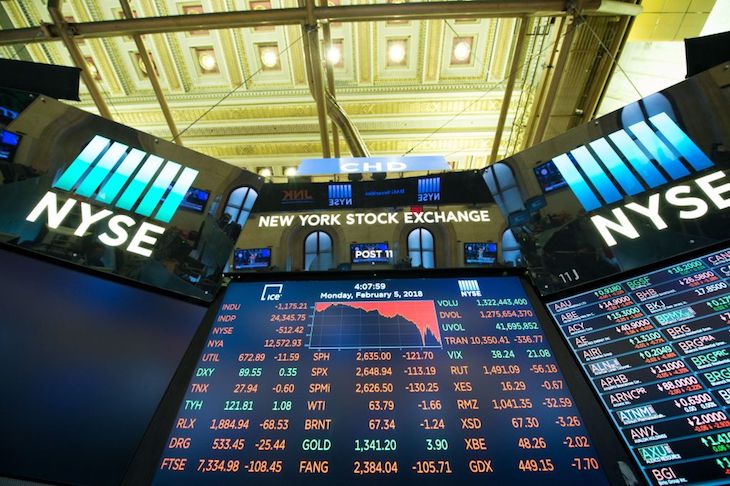It is easy to mock the most strident critics of capitalism, like Bernie Sanders and Jeremy Corbyn. It’s harder to ask whether they might actually have a point. Consider the past ten years of evidence. Since the collapse of Lehman Brothers, wages for ordinary workers have been on the floor — even today, the average pay packet in Britain is lower than it was before the crash. The main response to the crisis has been to print money, through quantitative easing and ultra-low rates. This artificially inflates assets. And who benefits? Those who have the most assets: in other words, the very rich.
Since the crash, the amount of wealth in Britain has risen by more than £4 trillion — almost half of which has accrued to the richest 10 per cent of households. The prices of the assets typically owned by the ultra-rich has risen even faster. Vintage Ferraris have quadrupled in price, as have similar collectibles. This is the magic of quantitative easing: Bank of England figures suggest that it has increased the assets of the richest households by £125,000 while reducing the lot of the poorest by £300.
And now, at long last, there are signs of this era coming to an end. Worldwide economic growth is back, stoked by the largest tax cut in the recent history of the world’s largest economy. It has long been hard to justify rock bottom interest rates; now it is impossible. The markets are adjusting to this fact, and volatility is back.
As Liam Halligan points out, the trigger for this week’s wobble in world stock markets was the news that US workers’ wages are rising fast. Donald Trump’s tax cuts are having quite an effect: companies are paying bonuses to their staff and hiring more people. The US economy is stronger than it has been at any point since 2005, perhaps before that. Trump’s tax cut represented bold, unilateral action — and it may well move the dial of the world economy. The market suspects that inflation might follow these pay rises, and that central banks might respond with interest rate rises. When this happens, savers tend to move money away from risky stock markets and back into safer bank accounts — provided they offer some kind of interest. As they used to, before the world went crazy.
The craziness explains why 1970s-style socialism is making a comeback. It is a perfectly logical form of protest against an economy that has indeed been rigged in favour of those at the top. Thomas Piketty’s Capital in the 21st Century was based on the idea that returns on assets (or capital) grows faster than those on wages (or labour). It underlined an idea that there is no point trying to earn your way to the top, because in-equality is hardwired into the system. It was a manifesto for the kind of high-taxing policies proposed by the new hard left.
When Piketty’s theory is tested, it collapses — as researchers at the IMF demonstrated. But this didn’t lessen the impact of the argument. Piketty’s book was persuasive because the phenomenon it described tallied with the experience of many: the idea that the world of assets was spinning away, and that lots of young people had no hope of being able to buy a house. It is not surprising if those with no capital are not particularly keen on capitalism. This is why the Germans are right to be so suspicious of government manipulation of money markets: it has all kinds of unexpected political side effects.
Even many at the top have been aghast at this. If a pensioner’s house trebles in value, it’s of no real use to him — unless he plans to downsize. It is of use to those who inherit his estate, but only after he dies. The main financial concern of the elderly is that their grandchildren now find it harder to work their way up the system. The asset bubble has, in theory, made a few people richer — but as a country it has made everyone poorer. It has helped to destabilise politics, sowing a sense of despair, and it has given Britain the very real prospect of a far-left prime minister and a Marxist chancellor.
That’s why the stock market turbulence is good news. It is high time that blue-collar workers received a boost, given that the asset-owning classes have enjoyed such huge returns for so long. When employers in Britain moan that it’s harder to find workers, there is a clear response: pay more, and offer more training. Perhaps a few US-style tax cuts in Britain would also allow companies to offer bonuses to staff, or to invest more in training them.
The stock market is not a barometer of the economy. For the past decade, shares have jumped on bad news — as investors expect a panicked government to respond by printing money and manipulating markets. This crony capitalism must now end; power needs to shift away from capital and back towards labour. Central banks worldwide will have to manage this process carefully, and investors can expect more hair–raising weeks. But it’s a price worth paying for the repair of the free market and a return to normality.






Comments